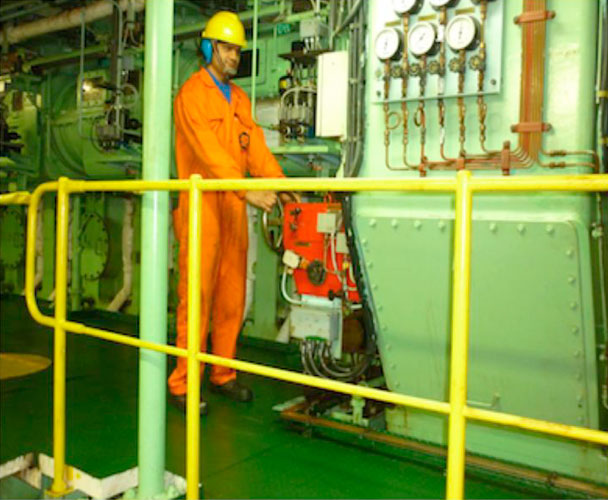
All important machinery systems on ship are provided with emergency backup or standby systems, which can be used in case of failure of the primary unit. Similarly, power supplies of essential machinery and systems are provided with emergency generators. Marine engine is also provided with emergency maneuvering control system in case the remote control system fails to operate.
Main engine is responsible for propulsion of the ship, and its direction and rotation are controlled from either bridge or Engine Control Room (ECR) through telegraph and fuel lever control. This control system is of remote control type used for both sea voyage and maneuvering of vessel.
If the remote control maneuvering system fails to operate from both the remote stations, i.e. bridge and ECR, or the governor of the main marine engine gets faulty, additional safety is provided by means of local maneuvering control system.

When the ship is in narrow channel under maneuvering, it is important for all engine room crew to know the change over and operating procedure for local/ emergency control.
Failure in knowing the remote control maneuvering system, can even lead to collision or grounding.
Procedure for Local or Emergency Maneuvering
The changeover and operating procedures of emergency maneuvering differ from engine to engine; however the basic procedure for all remains the same.
When there is automation or remote control failure alarm, changeover of control is to be done from remote (either wheelhouse or ECR) to Local Control Stand.
The local control stand is usually located in the engine room near the fuel pump platform of the main engine.
Changeover Procedure
- The change over procedure can be done with engine in stopped as well as running conditions, but if the situation permits, it is better to be done when the engine is stopped
- First change control from wheel house to ECR and ensure both the telegraphs, on wheel house and ECR, are in stopped position
- Bring the fuel lever of wheel house and ECR in stop position
- A changeover switch is provided in the ECR. Operate the switch from -"ECR to Local"
- Go to the local control station and changeover the fuel pump control shaft from local to manual
- A cone clutch arrangement or a mechanical lever arrangement may be provided, depending upon the engine type, which acts as manual control when attached to hand wheel, for operating fuel rack
- A locking pin or clip may be provided for the above arrangement as an additional safety so that it does not come out in normal operation
Operating procedure
- After the fuel rack is attached to the manual hand wheel control, wait for the wheelhouse order
- Respond to the telegraph and give fuel and air to the engine via local control levers
- If the engine fails to start, give extra amount of fuel and air, as now it is controlled manually and the linkage requires more push for the fuel supply
- Once the marine engine starts, follow the telegraph and maintain the speed from local fuel lever
Checks and Maintenance
- The remote control failure alarm is to be checked regularly
- Local telephone and communication system are also to be checked and maintained
- Local telegraph bell and indication light are to be checked and maintained
- All the linkages to be oiled and greased at regular intervals of time
- The safety clips or pins in the cone clutch or any other type of arrangement is to be checked
- Emergency maneuvering drills should to be conducted every month
References
A Pocket Guide To Fixed Fire Fighting Systems and Emergency Procedures For Ship’s Engine Room (Author: Marine Insight)

